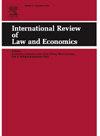中国法院是否适用“汉德公式”:安全保护义务相关案件的经验证据
IF 1
3区 社会学
Q3 ECONOMICS
引用次数: 0
摘要
本研究分析了中国法院在涉及安全保护义务的案件中做出的一万多份判决,采用急剧回归不连续设计来检验预期损失与预防责任之比与被告过失认定之间的因果关系。研究结果显示,在汉德公式的指导下,决策过程解释了大约20%至30%的司法判决。当专注于成本效益分析时,这个过程大约占决策的10%到15%。这些结果表明汉德公式对中国司法实践有显著影响。此外,汉德公式所蕴含的成本效益分析思维不仅是一种对经济效率的理论追求,更体现了一种超越积极法律规范的普遍直觉的公平正义感。本文章由计算机程序翻译,如有差异,请以英文原文为准。
Do Chinese courts apply the “Hand Formula”: Empirical evidence from cases related to the duty of safety protection
This study analyzes over ten thousand judgments by Chinese courts in cases related to the duty of safety protection, using a sharp regression discontinuity design to examine the causal relationship between the ratio of expected loss to the burden of precaution and the determination of defendant negligence. The findings reveal that the decision-making process, guided by the Hand Formula, explains approximately 20% to 30% of judicial decisions. When focusing specifically on a cost–benefit analysis mindset, this process accounts for approximately 10% to 15% of decisions. These results indicate that the Hand Formula significantly influences judicial practice in China. Moreover, the cost–benefit analysis mindset inherent in the Hand Formula is not only a theoretical pursuit of economic efficiency but also reflects a universal intuitive sense of fairness and justice beyond positive legal norms.
求助全文
通过发布文献求助,成功后即可免费获取论文全文。
去求助
来源期刊
CiteScore
2.60
自引率
18.20%
发文量
38
审稿时长
48 days
期刊介绍:
The International Review of Law and Economics provides a forum for interdisciplinary research at the interface of law and economics. IRLE is international in scope and audience and particularly welcomes both theoretical and empirical papers on comparative law and economics, globalization and legal harmonization, and the endogenous emergence of legal institutions, in addition to more traditional legal topics.

 求助内容:
求助内容: 应助结果提醒方式:
应助结果提醒方式:


